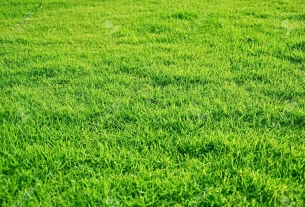Let’s be honest. You don’t need a sprawling backyard to be a gardener. A balcony, a sunny windowsill, a fire escape—that’s your canvas. But in these compact spaces, every leaf, every inch of soil, every ray of sun counts. And honestly, that’s where digital integration swoops in to change the entire game.
Think of it this way: you’re not just adding tech to your plants. You’re building a bridge between your tiny ecosystem and your smartphone, creating a responsive, almost living system that helps you do more with less. It’s about working smarter, not harder, in your pocket-sized paradise.
From Guesswork to Green-Thumb Precision
Remember the old way? Poking a finger in the dirt, hoping you’re watering right. Moving the herb pot a few inches this way, then that way, chasing the light. It was a lot of trial and error. And in a small space, error can feel like a big deal.
Digital tools cut through that uncertainty. They’re like giving your garden a voice. Suddenly, it can tell you exactly what it needs.
The Core Tech for Your Compact Garden
So, what does this actually look like on your balcony? Well, it’s not about turning your home into a spaceship. It’s about simple, clever gadgets that do one job, and do it brilliantly.
- Smart Sensors: These are your garden’s nervous system. Tiny, unobtrusive probes that you stick in the soil. They monitor moisture, light levels, temperature, and even nutrient levels. They’ll ping your phone the moment your basil gets thirsty, so you never over-love it with water again.
- Automated Watering Systems: Pair a smart sensor with a small, DIY drip irrigation system or a self-watering planter. Going away for the weekend? No problem. Your garden waters itself, precisely when it needs to. It’s pure peace of mind.
- App-Based Plant Diaries & IDs: Apps like Planta or PictureThis are like having a botanist in your pocket. Snap a photo of a leaf to identify a pest or a disease. Log your plant’s growth. Get tailored reminders for watering, fertilizing, and repotting based on your specific plant type and your local environment.
Planning Your Pixel-Perfect Plot
Before you even put a seed in the soil, digital tools can set you up for success. Space is your most valuable commodity, right? You need to maximize it.
Garden planning software and apps let you create a virtual model of your space. You can drag and drop planters, see how shadows fall at different times of the day (some apps use augmented reality for this—it’s wild), and plan for vertical gardening solutions. This pre-visualization stops costly mistakes and helps you design a layout that’s both beautiful and brutally efficient.
Here’s a quick comparison of two common digital approaches for small spaces:
| Approach | Best For | Considerations |
| App-Guided Natural Light Gardening | Balconies, windowsills, patios. The gardener who wants to work with their existing environment. | Lower cost, highly flexible. Still relies on you to do the physical work of watering and care. |
| All-in-One Smart Indoor Gardens | Countertops, low-light apartments. The beginner or someone who wants ultimate convenience for herbs & salads. | Higher upfront cost, but offers controlled LED lighting and automated watering for guaranteed harvests. |
The Human in the Loop: Don’t Lose the Magic
Okay, here’s the deal. With all this talk of sensors and algorithms, it’s easy to wonder: are we losing the soul of gardening? The simple, dirty-fingernails joy of it?
Absolutely not. Or at least, it doesn’t have to. Think of digital integration not as a replacement for you, the gardener, but as your most trusted assistant. It handles the tedious monitoring, the easy-to-forget tasks. This actually frees you up for the more rewarding parts—the pruning, the harvesting, the quiet observation.
That said… the data is incredible, but it can’t replace the feeling of the sun on your skin as you tend to your plants. It can’t replicate the scent of fresh basil after a rain. The tech tells you the “what,” but you still bring the “why.” You’re the one who decides to talk to your seedlings, to notice the first hint of a flower bud. The magic is in the partnership.
Getting Started Without Getting Overwhelmed
Feeling a bit of tech fatigue? Don’t dive in headfirst. The beauty of small-space tech is that you can start tiny. Honestly, just pick one thing.
Maybe begin with a single smart soil moisture sensor for your fussiest plant. Or download a free plant identification app and start learning. The goal isn’t to automate everything overnight. It’s to slowly, thoughtfully, build a system that makes your life easier and your garden happier.
Here’s a simple, numbered path to get going:
- Audit Your Space: Use your phone’s camera and a light meter app to map out the sunniest and shadiest spots over a day.
- Solve One Problem: Pick your biggest pain point. Is it forgetting to water? Start with a self-watering pot or a single sensor. Is it not knowing what’s wrong with your plant? Download a plant ID app.
- Integrate One System: Connect that one new tool to your routine. See how it feels. Does it reduce your stress? Great.
- Expand Gradually: Once you’re comfortable, consider adding another layer—maybe a small automated drip line for your container tomatoes.
A Connected, Flourishing Future
In the end, digital integration in small-space gardening isn’t about cold, hard tech. It’s about cultivating resilience. It’s about creating a tiny, thriving world that fits your modern life. A world where you can grow your own food and beauty, no matter how cramped your urban environment might be.
It turns a hobby of hope into a practice of precision. And in that precise, well-tended space, life finds a way to burst forth—more vibrant and more reliable than ever before. Your small space isn’t a limitation anymore. It’s an opportunity, waiting to be plugged in.





